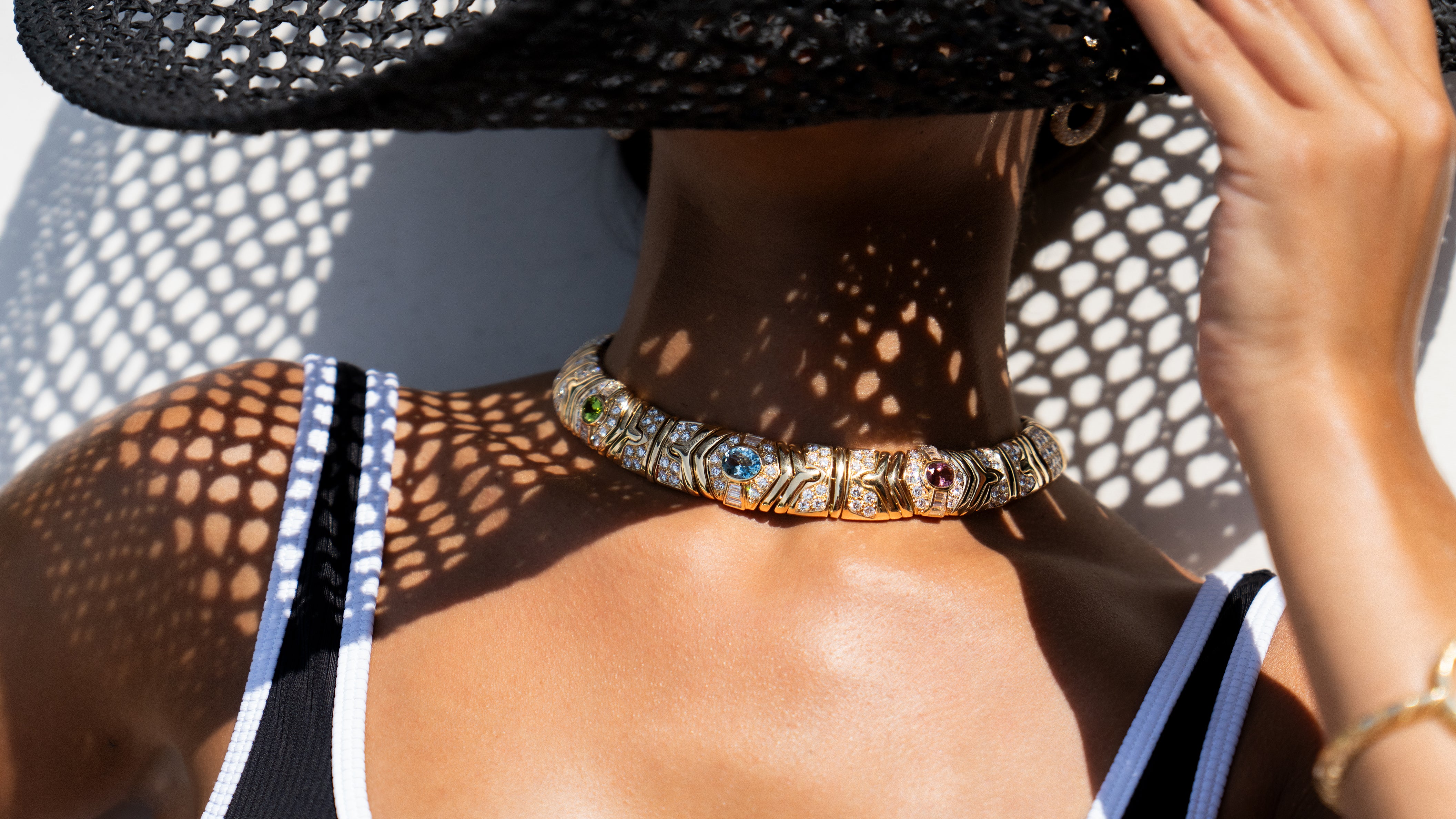Pierre Sterlé
Widely acknowledged as the “couturier of jewelry,” French designer Pierre Sterlé was an inspired creator of fine jewelry whose work continues to command high prices at esteemed auction houses.
Early Years
World War I shaped Pierre Sterlé’s life in ways he’d not imagined. Born in 1905 to a family of bankers, Pierre was just 10 when his father died in the Great War. He went to live with his uncle, Maynier-Pincon, a jeweler in Paris who operated on the rue de Castiglone. As he grew to maturity, Sterlé began to take up his uncle’s work. Under his tutelage, Sterlé gleaned the knowledge and honed the skills that would enable him to open his workshop.
Emerging Talent
The rue Sainte Anne became home to Sterlé’s workshop. At 29, and for the following five years, Sterlé designed jewelry for some of the most notable Parisian Maisons, such as Chaumet, Boucheron, and Ostertag. At the same time, his personal style was beginning to emerge, and prestigious clients were taking notice. As a result, the opportunity arose to accept commissions by individuals, and by 1939, he designed exclusively for his private customers.
With this newfound success, in 1945, Sterlé decided to move to a more opulent setting, opening a studio at 43, Avenue de l’Opera. It was close enough to the Place Vendôme, a convenience for his wealthy and fashionable clients, but just distant enough to maintain his elite status. At this point in time, he wanted to focus his third-floor atelier solely -- he wasn’t interested in having a street-level boutique that displayed his jewelry designs to the public. It was essential to give the impression that his jewelry wasn’t for just anyone who walked by.
The Pinnacle
The 1940s and 1950s would be the heyday for Sterlé and his fabulous creations. In 1950, King Farouk of Egypt commissioned a crown for his wife, Queen Narriman. Other famous clients included the Maharani of Baroda and the Begum Aga Khan. French author Colette was captivated by Sterlé’s designs, saying he turned her room into an Aladdin’s cave when he brought his designs to show her.

Serle’s success hit its zenith in 1953 when he won the De Beers Diamond Award, which was a major coup for the jewelry designer. He went on to win the following two years as well, firmly establishing his place in posterity.

Fueled by his success, Sterlé embarked on an unfortunate scheme to produce a line of perfume in 1961. Although a multi-talented designer, he did not possess the business savvy necessary for a successful enterprise. He was forced to sell his stock at or below cost.
Paris Biennale
He recovered nicely from his misstep with perfume, and in 1966 he presented a highly successful display at the 1966 Paris Biennale. Sterlé was the first modern jeweler invited to show his designs. The presentation featured a life-sized Temple of Love, complete with pearl-encrusted dolphins and a glass pyramid that displayed trays of white coral with his signature nature designs alongside exquisite jewels featuring flowers, birds, and marine life. The effect caused quite a sensation.
Unfortunately, this was followed by Sterlé’s disastrous decision to open his own boutique on the rue Saint-Honoré. Why he changed his strategy so dramatically was puzzling, as this did not fit his business model. In 1976, he was once again forced to liquidate. He turned to Chaumet, which agreed to purchase his business. Sterlé would remain a technical consultant with Chaumet until his death two years later.
Sterlé Style
Sterlé’s work embraced an exclusivity and prestige, reflecting the personal charm and élan of the man who created it. Not himself a draftsman, Sterlé instead hired highly talented artisans to translate his creativity into technical designs for craftsmen to use.
Much of Sterlé’s work was inspired by nature. Flowers, leaves, birds, and feathers were some of his favorite themes. Asymmetry and a baroque influence contrasted with geometric shapes and arabesques, which were the dominating traditional jewelry styles of the time. The effect of precious and semi-precious stones was unusual then, as well as the use of materials such as shell. He liked nothing better than to employ the vibrant tones of sapphire, peridot, lapis, coral, and turquoise to create a palette of color for his creations.
Sterlé mastered diamond and platinum creations, each a triumph of engineering and design. The pieces featured ribbons of round and baguette diamonds with diamond tassels, creating a fluid combination of glamour and grace of movement.

His work with gold was remarkable for its fluidity. Birds appeared to be in flight; leaves seemed to flutter. And Sterlé’s mastery with gold wire was unapproachable. He created what he referred to as “angel wire” from gold wire that was woven and knotted. Tassels of gold featured prominently in a number of his pieces.
The brooch was one of Sterlé’s favorite pieces to design. He created small pictures worn at the neck. He also designed minaudiéres (evening bags) and jewelry boxes.
At the end of his life, Sterelé consulted with Chaumet. Some of the pieces signed with the Chaumet name bear the unmistakable look of Pierre Sterlé.
Browse our Selection of Pierre Sterlé Pieces

